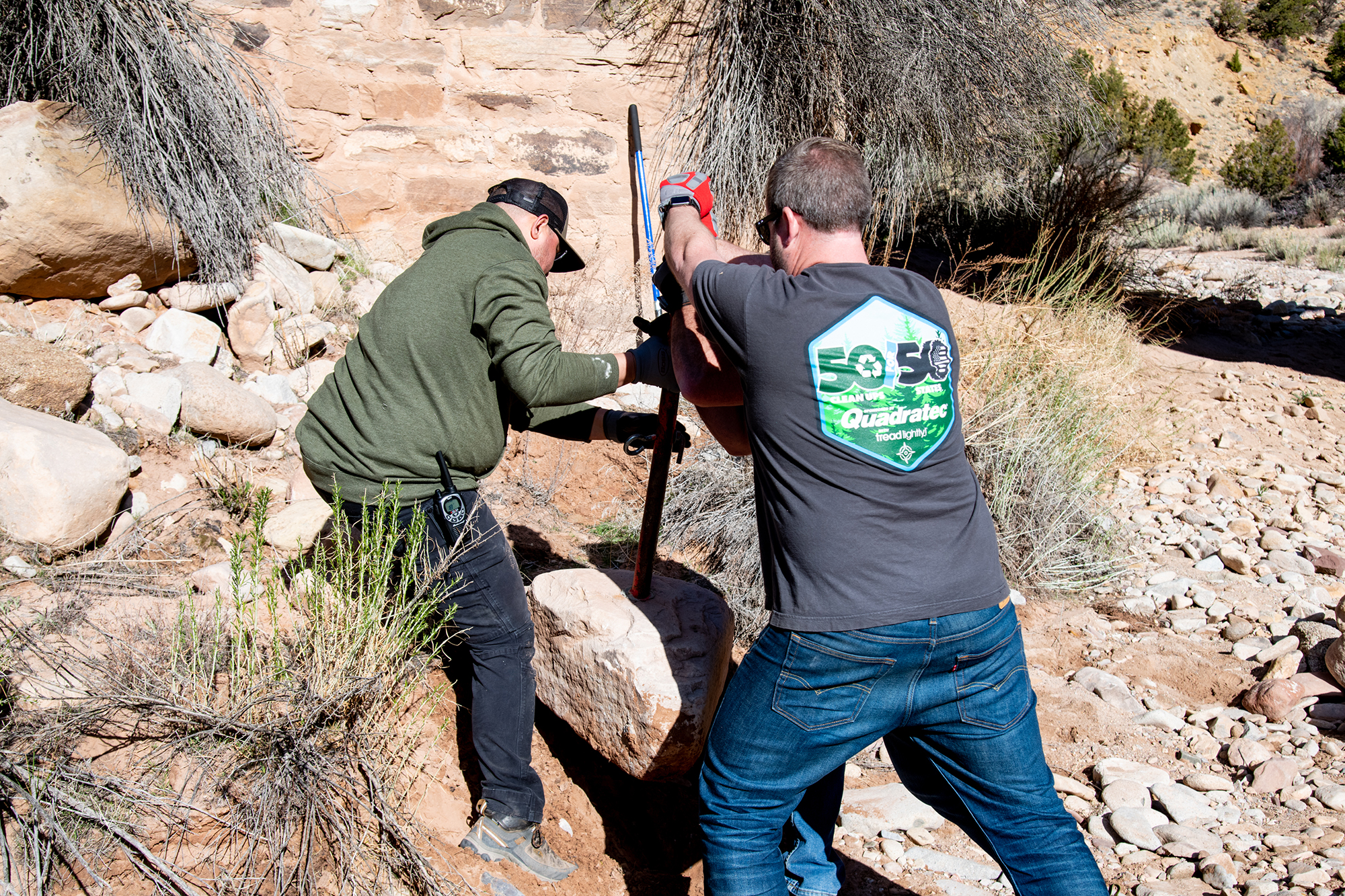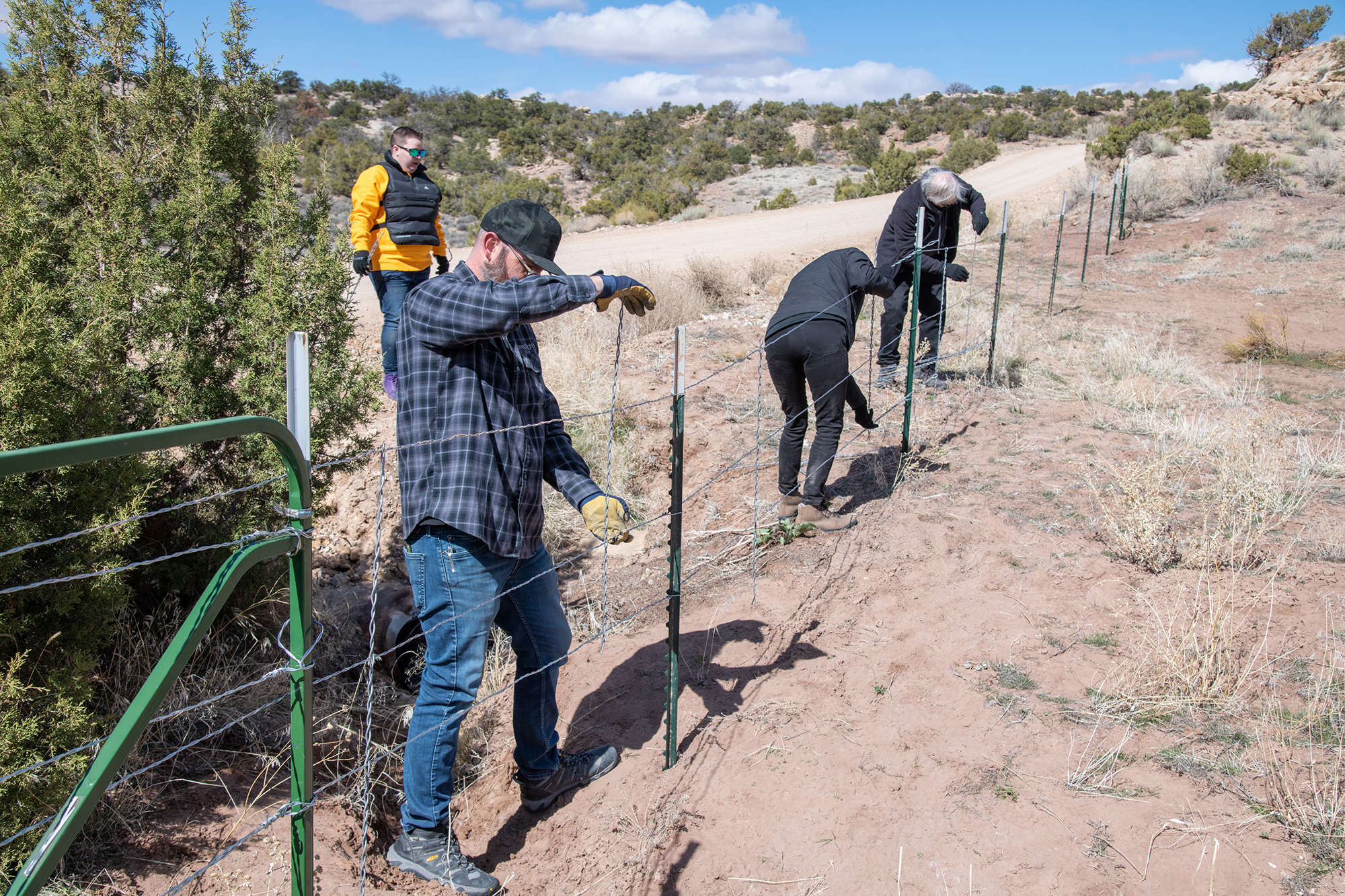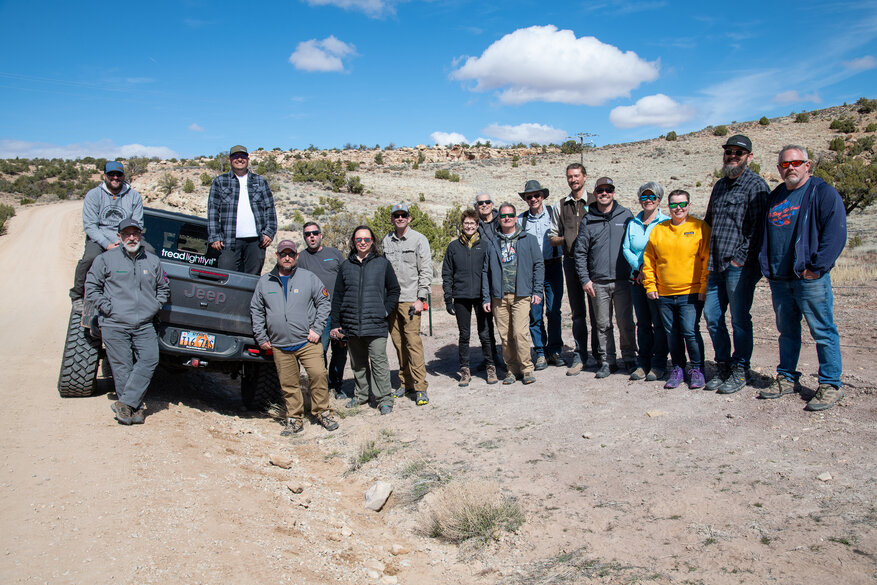by Matt Konkle
Managing Editor
MOAB, Utah — Nestled in the western shadow of Utah’s La Sal Mountain Range sits a rat’s nest of roads spiderwebbing through dirt and dust in the southeastern part of the state. One of those, Pole Canyon Road, splinters off U.S. Route 191 and winds its way east towards those normally white-capped mountains — passing federal and private land along the way.
Nearly 13 miles north sits Moab with its normal population now swollen by thousands of Jeep enthusiasts in town for the annual Easter Jeep Safari event. Many of them were no doubt loading up for another full event day of trails, obstacles, and amazing scenery.
For some, though, the trails will have to wait for a bit.
Because there is some important work to be done.
Tread Lightly! work.
During the Wednesday of Easter Jeep Safari week, several volunteers headed out with Tread Lightly! and the Bureau of Land Management for an important fencing and restoration project on said Pole Canyon road — just shy of Coyote Canyon, perhaps the toughest trail in the entire Moab system.
Travelers, many in large RVs or full-size trucks towing off-road vehicles, had been veering off the road lately and destroying sections of private land. Additionally, water run-off from a recent storm had destroyed an important fence that was preventing vehicles from accessing Coyote Canyon from an illegal entrance.
So Wednesday’s work sought to help prevent further land damage as well as restore that important water fence.
After staging just off the highway, volunteers headed out to both locations. One group, including members from the Specialty Equipment Market Association’s (SEMA) Truck and Off-Road Alliance, was tasked with installing nearly 250 feet of fencing along Pole Canyon road — driving posts in at set intervals and then stringing wire down the line to each post.
The other group, including several volunteers from Quadratec, set off for the wash area to rebuild that water fence.

To remedy the issue, a rather large boulder embedded with a long fence post and weighing several hundred pounds, needed to be moved from the wash area back to the western bank. Once accomplished, a new deeper hole had to be dug for that rock, then filled in and finally supported by several other rocks to prevent the post from dislodging in the future.
It took some muscle, but led by Quadratec Video Production Manager Rob Jarrell, the group eased the hefty rock into place. When set, several of the volunteers helped stretch the water fence back across the wash and securely attached to the post.
”We’re at the creek that comes out of Coyote Canyon, for those who know Moab, Coyote Canyon is a 9.5 (rated trail). It’s the most difficult trail here,” said Evan Robins, Tread Lightly! National Stewardship Program Manager. “So at the bottom of the canyon, there is a wash. And this wash has washed out the water gate that keeps people from driving into the sensitive area in the creek. So that had been pulled down into the creek bottom. We had our help with friends from Quadratec, and we lifted, I don’t know, about a 400-pound boulder back into place and reset the water bar fence that will be here for years to come, I hope, and prevent that improper trail access.”

With that project finished, the second group rejoined the others and helped complete the post and fence installation along Pole Canyon’s roadside.
“This project was a great example of the unique relationship between private and public land management and how we as recreationists need to work together to protect access to both,” Robins said. “Thank you to our volunteers, SEMA, and our local landowner who worked with the offroad community to make this happen.”
Over the years at EJS, Quadratec has participated in numerous trail improvement and restoration projects alongside Tread Lightly!. Additionally, the popular ’50-for-50 Trail Restoration Initiative’ was launched during the 2022 EJS during a project at Kane Creek.
That program helped assist 50 trail or public land clean up events, one in each state, and just wrapped up in late March. Overall, it funded over 7,500 volunteer hours valued at $227,000, while removing 125,000 tons of trash and improving 910 miles of trail.
Recommended Reading:
Jeep Unveils Four New Concepts For 2024 Easter Jeep Safari





















